R-6: Difference between revisions
Pbcjohnston (talk | contribs) mNo edit summary |
Pbcjohnston (talk | contribs) Added captions |
||
| Line 53: | Line 53: | ||
[[File:R-6 snorklemast2.jpg|left|500px]] | [[File:R-6 snorklemast2.jpg|left|500px]] | ||
<div style="text-align: justify;"><span style="color:#00008B">R-6 heading to sea in August, 1945 for tests of the newly installed snorkel device. This device would allow the submarine to run its diesel engines while at periscope depth, giving it a significant tactical advantage by eliminating the need to surface to charge batteries. Unfortunately, the technology came to the U.S. too late to have any impact on the war effort. By the time a design had been adapted from the original Dutch drawings and testing had begun, the war in the Pacific had concluded. The snorkel would play a large role in post-war submarine operations, with nearly every USN submarine adapted to use one. | |||
<small>This photo is the private property of the Gargano family and MAY NOT BE USED WITHOUT THEIR EXPRESSED PERMISSION.</small> | |||
[[File:Red bar sub new.jpg]] | |||
[[File:R-6 garganonsnorklemast.jpg|left|500px]] | [[File:R-6 garganonsnorklemast.jpg|left|500px]] | ||
<div style="text-align: justify;"><span style="color:#00008B">R-6 snorkel mast with Michael Gargano sitting on the engine exhaust, August 1945. The head valve of the snorkel can be seen above Gargano's head. The induction head valve was an extremely important part of the design. It had a round float attached to a lever arm. If the boat dipped to low or if a wave washed over the head valve, the float would shut a valve disk on top of the assembly and prevent water from being ingested into the engines, which is a very bad situation. The float valve was nearly directly copied from the original Dutch design, and it had been adopted by the Germans. USN testing showed that that design was not sensitive enough to close off for spray nor did it close tight enough. Leaks were commonplace. Iterative testing eventually led the USN to alter the design significantly. As adopted for operational use the head valve was pneumatically actuated by three electrodes paced evenly around the rim of the head valve opening. When one or more of the electrodes was touched by seawater it closed an electrical circuit that actuated a pneumatic valve that instantly closed the head valve tightly and firmly. Once the electrodes were clear of water the valve would release the air pressure and the valve would pop back open. | |||
<small>This photo is the private property of the Gargano family and MAY NOT BE USED WITHOUT THEIR EXPRESSED PERMISSION.</small> | |||
[[File:Red bar sub new.jpg]] | |||
[[File:R-6 crew relaxing1.jpg|left|500px]] | [[File:R-6 crew relaxing1.jpg|left|500px]] | ||
<div style="text-align: justify;"><span style="color:#00008B">R-6 crew relaxing while in port at Fort Lauderdale, Florida, August, 1945. The war had just ended when this photo was taken and the men of our submarines could relax for the first time in three and a half years. The [[R-10|'''R-10 (SS-87)''']] is moored alongside. | |||
<small>This photo is the private property of the Gargano family and MAY NOT BE USED WITHOUT THEIR EXPRESSED PERMISSION.</small> | |||
[[File:Red bar sub new.jpg]] | |||
[[File:R-6 crew relaxing2.jpg|left|500px]] | |||
<div style="text-align: justify;"><span style="color:#00008B">A photo taken just after the one above from a slightly different angle. More details of the R-10 can be seen. One crewman is sitting on a chair on the deck of the R-10. Fort Lauderdale, Florida, August, 1945. | |||
<small>This photo is the private property of the Gargano family and MAY NOT BE USED WITHOUT THEIR EXPRESSED PERMISSION.</small> | |||
[[File:Red bar sub new.jpg]] | [[File:Red bar sub new.jpg]] | ||
Revision as of 12:43, 18 September 2023
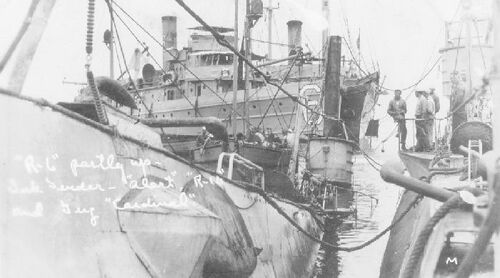
USN photo in the private collection of Ric Hedman
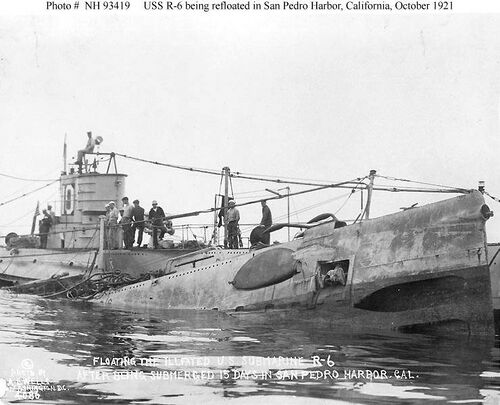
U.S. Navy photo NH 93419 via NHHC.

USN photo in the private collection of Ric Hedman
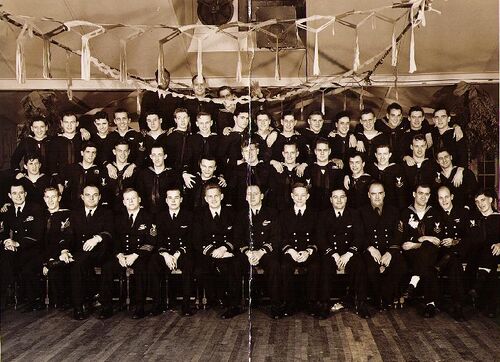
The crew photo was most likely taken at Christmas 1944 in or around New London/Groton at a place called "Polly's" that burned down in the late 40's or early 50's. There were numerous crew parties and photos taken there. When asked, locals can no longer tell you exactly where it was located.
This photo is the private property of the Gargano family and MAY NOT BE USED WITHOUT THEIR EXPRESSED PERMISSION.
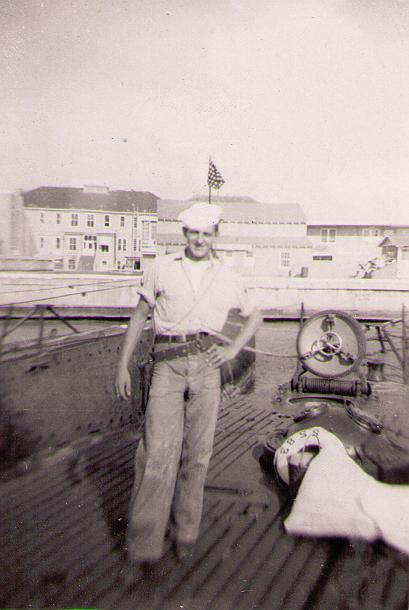
This photo is the private property of the Gargano family and MAY NOT BE USED WITHOUT THEIR EXPRESSED PERMISSION.

This photo is the private property of the Gargano family and MAY NOT BE USED WITHOUT THEIR EXPRESSED PERMISSION.

This photo is the private property of the Gargano family and MAY NOT BE USED WITHOUT THEIR EXPRESSED PERMISSION.

This photo is the private property of the Gargano family and MAY NOT BE USED WITHOUT THEIR EXPRESSED PERMISSION.
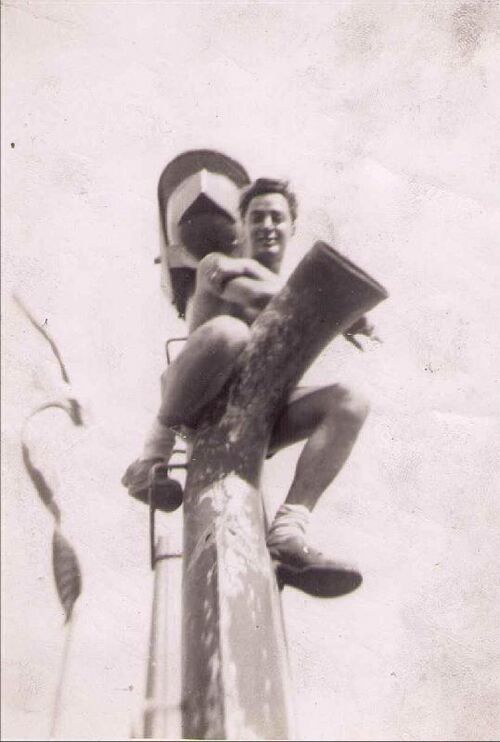
This photo is the private property of the Gargano family and MAY NOT BE USED WITHOUT THEIR EXPRESSED PERMISSION.

This photo is the private property of the Gargano family and MAY NOT BE USED WITHOUT THEIR EXPRESSED PERMISSION.
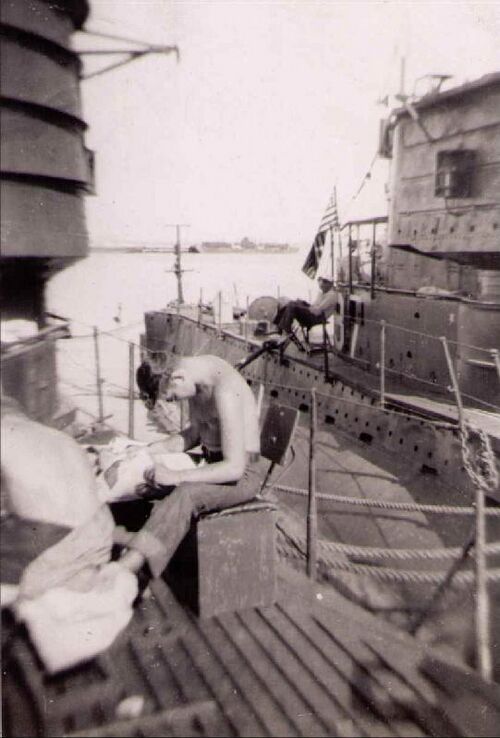
This photo is the private property of the Gargano family and MAY NOT BE USED WITHOUT THEIR EXPRESSED PERMISSION.
Page created by:
Ric Hedman & David Johnston
1999 - 2023 - PigBoats.COM©
Mountlake Terrace, WA, Norfolk, VA
webmaster at pigboats dot com
